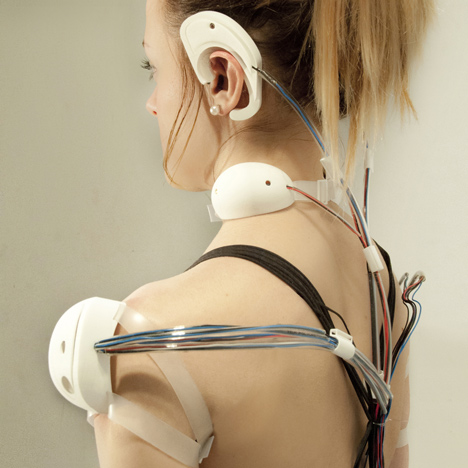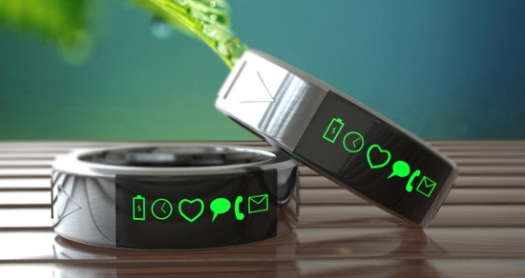1. VIGOUR

“Vigour is a Product Service System that enables geriatric patients, physiotherapists and family to gain more insight in the exercises and progress of a rehabilitation process. A knitted cardigan with integrated stretch sensors monitors the movements of the upper body, and communicates this data to the service provider.” – Vigour Web –
I like this type of wearable tech is because it helps a very fundamental needs of a person, which is to communicate as in having our brain memory and reasonings-skill works. How it works basically the cardigan is used while the dementia patient does her/his physical movements therapy and it records the movements that are made, so the therapist/doctor has the data about that particular exercise. During patient’s daily activity and next therapy, the integrated iPad-app for the cardigans will tell therapist/doctor if patient is able to repeat the movements or making any progress. The design is also not gadgety, it is a very humble design with calm colours.
Dementia is a chronic disorder that not only affecting a person, but his/her surroundings, this is how I see wearable tech should really proceed in the future, really giving an fundamental impact of a person’s life also people around her/him.
2. REALITY MEDIATORS

Dezeen: These wearable devices by designer Ling Tan cause unpleasant sensations when the wearer becomes inactive or stops concentrating. Reality Mediators project hooks up wearable sensors that detect muscle movements, brainwave activity and GPS location with four different devices that cause discomfort to the body. If the wearer stops moving or has a lull in mental activity for too long they will experience either an electric shock, an unpleasant sound, intense heat or irritating vibration. For example, when the brainwave activity sensors and muscle electrical stimulation armband are worn, electric shocks are emitted when brain activity is low but cease when concentration levels increase.
I like this one because it keeps you “social” and focus because you will be given uncomfortable sensation if our brain is idle or distracted from our default activity.
3. IMOGEN HEAP’S MUSIC GLOVES

This is my personal favourite for awhile because I love music and by wearable technology, music can really make a change for people with disability by making or playing music. Music itself is a social tool, but this gadget could really enhance the level of people’s interaction through music.












































